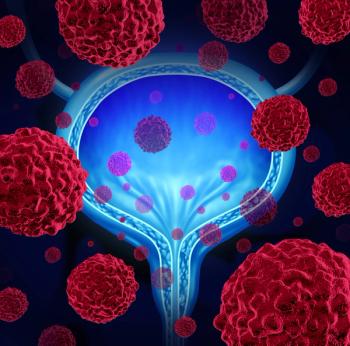
Immediate Adjuvant Chemo Delayed Bladder Cancer Progression
Immediate adjuvant cisplatin-based combination chemotherapy after radical cystectomy in patients with transitional cell carcinoma of the bladder significantly increased progression-free survival, according to the final results of the EORTC 30994 trial.
Immediate adjuvant cisplatin-based combination chemotherapy after radical cystectomy in patients with transitional cell carcinoma (TCC) of the bladder significantly increased progression-free survival, according to the final results of the EORTC 30994 trial (abstract 4500).
“This is the largest randomized trial ever reported of adjuvant chemotherapy in patients with muscle invasive bladder cancer,” said Cora N. Sternberg, MD, FACP, of San Camillo and Forlanini Hospitals, Rome, Italy, who presented the results at the 2014 ASCO Annual Meeting.
Patients with muscle invasive TCC have survival rates of about 50% 5 years after cystectomy primarily due to systemic metastatic disease at diagnosis. Cisplatin is effective in metastatic disease and is used to prolong survival as neoadjuvant therapy. However, there is currently no evidence that adjuvant chemotherapy after cystectomy prolongs survival.
EORTC 30994 was initiated in 2002 to compare immediate with deferred chemotherapy after patients with locally advanced TCC underwent radical cystectomy. Patients were randomly assigned within 90 days of surgery to immediate therapy with 4 cycles of chemotherapy or to a deferred 6 cycles of chemotherapy at relapse. All patients had pT3-pT4 and/or node-positive TCC with no metastases and no microscopic residual disease.
The trial was closed early in August 2008 for poor accrual, with only 284 patients enrolled. A test for futility showed that follow-up would have to be continued for 5 years after closure to patient entry. The cutoff date for this final analysis was January 2014, at which time 148 deaths had occurred.
The researchers stratified the patients according to tumor stage (pT1-T2 vs pT3 vs pT4) and lymph node status. Patient characteristics were very well balanced between the two treatment arms. Ninety-one percent of patients in the immediate arm received chemotherapy as planned; however, only 46.9% of patients in the deferred arm received chemotherapy (27% of patients in this arm never progressed).
Looking at the primary endpoint of progression-free survival, patients who were given immediate treatment had a significant improvement compared with those assigned to deferred therapy (HR = 0.52; 95% CI, 0.39-0.71). The 5-year progression-free survival was 46.8% in the immediate arm compared with 29.5% in the deferred arm (P < .0001).
“Patients had a median progression-free survival of 2.92 years compared with 0.93 years on the deferred arm, a difference of 2 years,” Sternberg said.
A non-significant reduction of 22.2% in the risk of death was found for the secondary endpoint of overall survival in the intent-to-treat population (HR = 0.78; 95% CI, 0.56-1.08). The 5-year overall survival rate was 53.6% for the immediate arm compared with 47.7% for patients in the deferred arm.
An exploratory analysis of progression-free survival by disease stage showed that all groups benefited from undergoing immediate adjuvant chemotherapy. However, looking at overall survival, those patients who were pT3–T4 and node negative are the ones who seem to have benefited most from adjuvant chemotherapy. However, Sternberg said that this should be interpreted with caution because the number of patients with that disease stage was small.
Newsletter
Stay up to date on recent advances in the multidisciplinary approach to cancer.
































































































